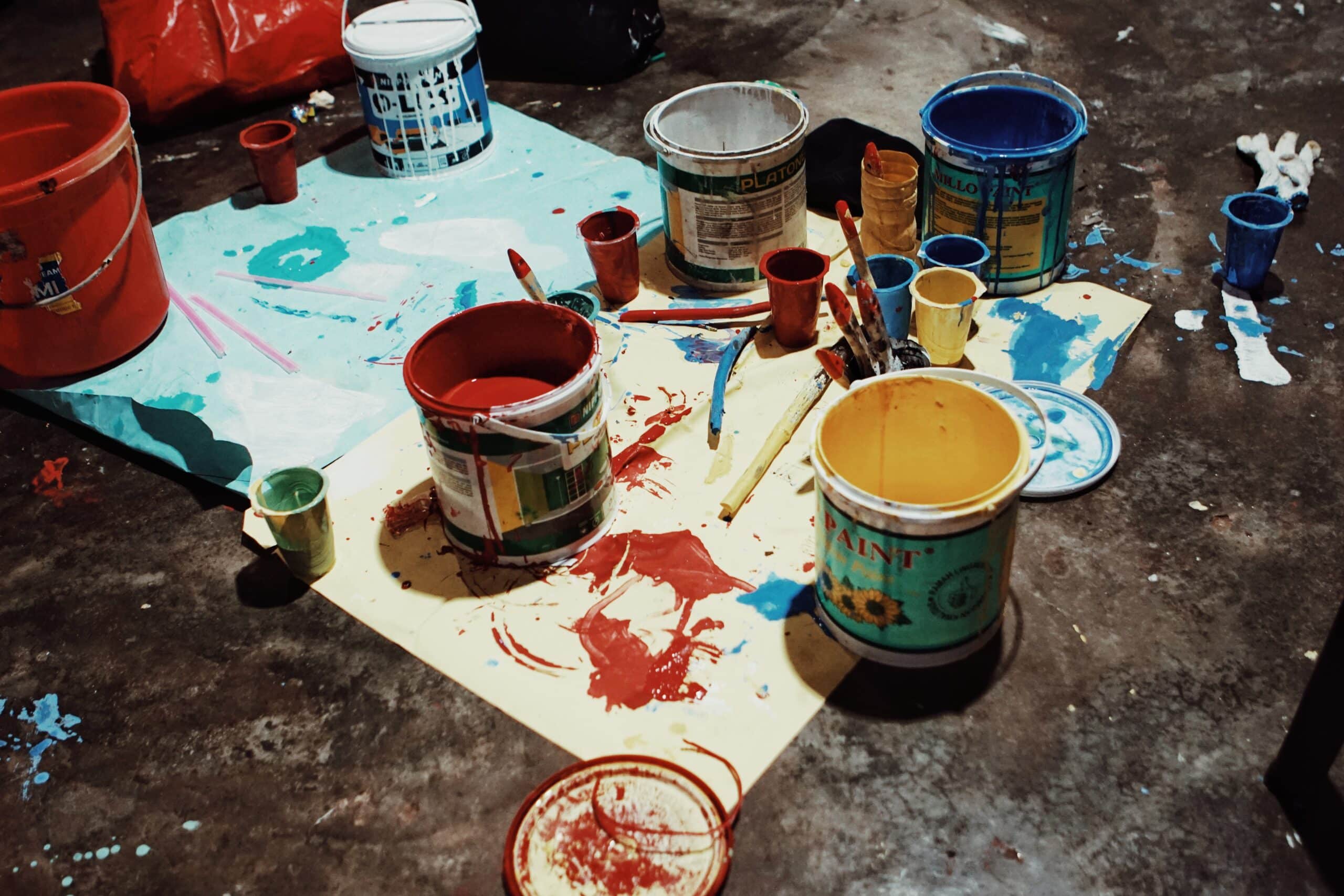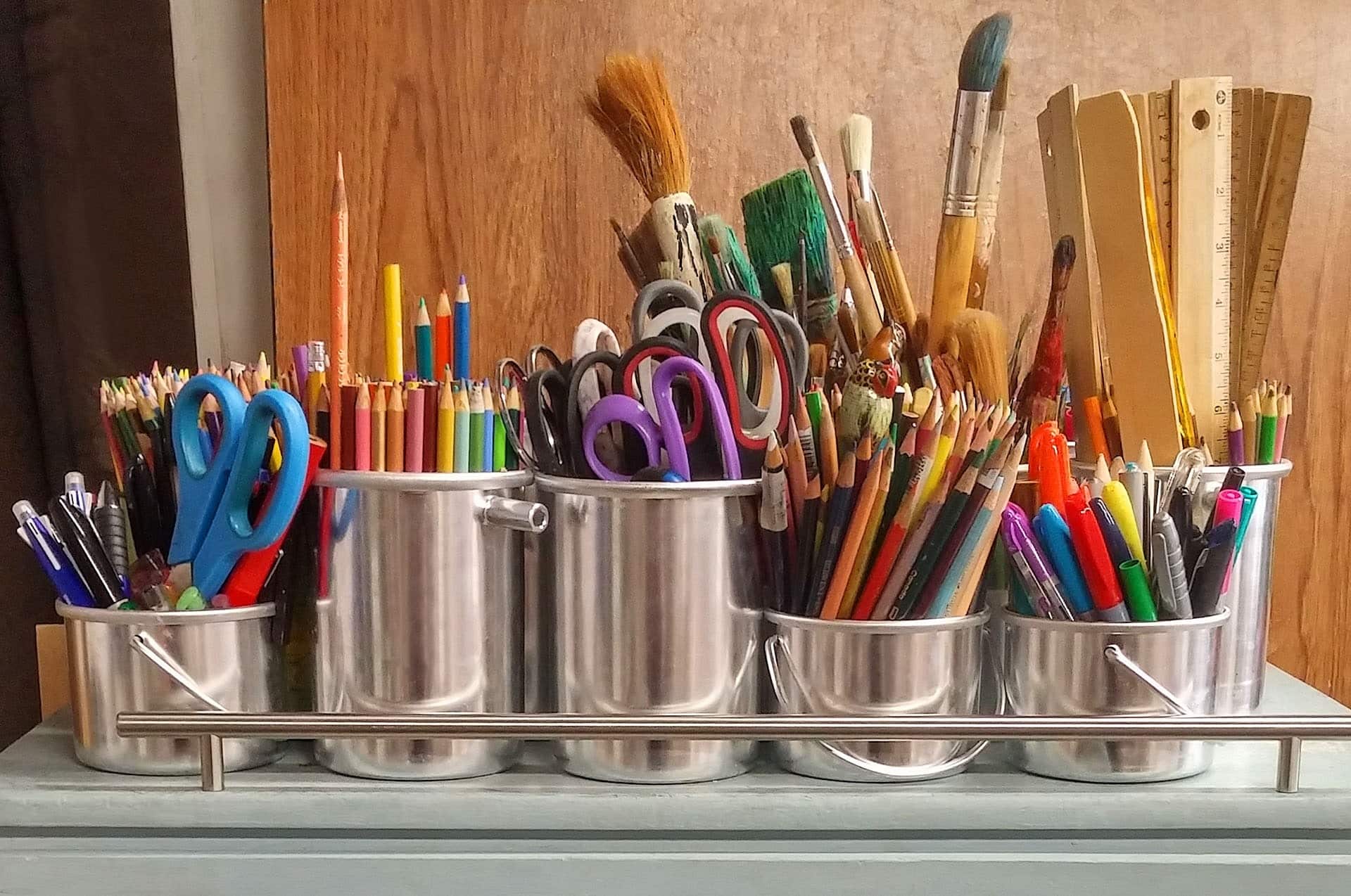If you’re a parent, you probably already know that giving young children access to art and craft supplies is not only good for stoking their rich imaginations, but it also helps them better develop their cognition and fine motor skills. However, the mess and clutter that seems to follow every young child’s creative outbursts is not always something that Singapore parents want to deal with.
Fortunately, parents don’t have to choose between cultivating their child’s development and having a reasonably clutter-free home. With a few simple household items and precautions, parents can easily mitigate the messes that come with their child’s arts and crafts sessions. Let’s look into some ideas that you can take into consideration to better keep your child’s crafty clutter in check.
1) Designate a Specific Arts and Crafts Area
When it comes to organizing creative activities in early childhood, Singapore-based preschools have it mostly figured out. Take inspiration from your local preschool and designate a specific part of your home for your child’s creative endeavors that contain all their different art materials.
Having a designated art space will keep you from having to look through every part of your home just to find the materials your child needs. Setting up a special area also helps ensure that any messes your child makes will be limited to just one part of your home, simplifying post-project clean-up.

2) Accept That There Will Be Messes
When you give inherently messy art materials to very young children who have yet to develop fine motor skills, disarray is inevitable. After all, even the most skilled adult artists make a mess when working, so it’s unfair to expect anything different from a young child.
Instead of freaking out or despairing at the clutter and chaos of your child’s creative impulses, accept it for what it is—a natural part of your child’s growth and development. Once you’ve accepted that, it’s easier to view the messes your child leaves behind in a positive, or at least, less negative light. From there, you can take a more realistic attitude toward controlling and mitigating messes rather than totally eliminating them.
3) Put a Large Mat Down in the Crafts Area
Setting down mats or rugs that you don’t mind getting stained in your child’s crafts area can help contain any spills, clutter, and messes. It can also help delineate the area more clearly, helping your child understand that most of their projects should take place here and not in some other part of your home.
4) Shelves, Shelves, Shelves
If you’re serious about cultivating your child’s creative side, it will soon become clear that you can never have too many shelves or cabinets in their arts and crafts zone. Without shelves, all their paint bottles, markers, paper cut-ups, popsicle sticks, and googly eyes will be constantly strewn about. Ensuring that you have enough space to stow away your child’s art materials will go a long way toward minimizing the post-crafting clutter in your home.
5) Store Small Items in Clear, Non-Breakable Storage Containers
If your child is particularly expressive, just having enough shelves and cabinets won’t be enough to take care of their clutter. You’ll also need to organize all the small crafty bits and bobs with a set of storage containers.
Ideally, these containers should be clear so that you and your child can immediately see the contents. They should also be non-breakable (not made of glass or ceramic, for example) so that they won’t break into dangerous shards when dropped from a height. While not strictly necessary, it’s also a good idea to choose standardized, stackable containers so that they appear neater on your shelf and are easier to stow away.
One great low-cost option that meets all these requirements is see-through deli containers. If you order out a lot, as a lot of Singaporeans do these days, you probably have a pile of them in your home, making them an essentially free resource for many local households.
How to Spark Your Toddler’s Creativity And Imagination
6) Label Containers, Bins, and Drawers Clearly
Most children of preschool age are just starting to learn how to read. By labeling their art supplies clearly, you’ll make it a bit easier for them to identify what specific materials they need for their current art projects. Additionally, labeling the different containers gives everything a “home” to go back to after your child is done working on their projects, which greatly simplifies clean-up and organization. If your child has started writing, you can also make the labels together to help expand their vocabulary.

7) Keep Some Supplies Out of Sight
While you want most art supplies visible and within reach of your child, some types of art supplies can be potentially dangerous or extra messy for young children to use. Scissors, glitter, and small beads are potentially hazardous for younger children if they’re allowed to use these unsupervised.
It may be a good idea to keep these types of materials in a locked case on your child’s art supplies shelf or hidden in a different part of the home, only to be brought out for supervised creative time. As soon as your child matures and becomes more accustomed to using these items, you can consider giving them freer access.
8) Communicate
The most underrated way to keep your child’s art materials organized and minimize messes in your home is to actively communicate your expectations with your child. Fortunately, young children can be incredibly receptive and willing to please their parents. To help your child’s creative drive stay focused, have frequent and positively framed conversations with them from an early age. Make sure you put your children’s crafts supplies away properly when they’re done using them, this will help them to develop a sense of responsibility.
Keep a Tidy Home While Fostering Your Child’s Artistic Side
As a parent, it can be challenging to develop your child’s creativity while still maintaining an organized home. It’s a good thing you can create a fun and functional environment for your child to develop their fine motor skills and explore their artistic side.
By following the tips provided above, you won’t have to choose between raising a creative, fully actualized child, and keeping your home tidy and organized.
